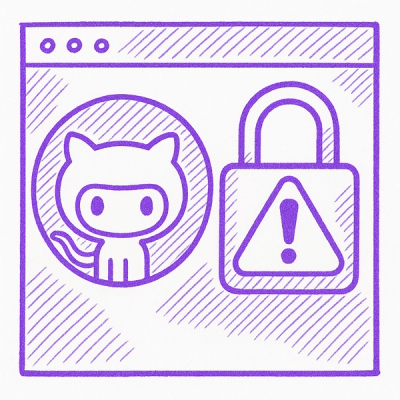Please if you detect a error inside documentation or if you have
a best precision of english langague push a pull request or open
a new issue
build your will flexible new project with a standard model view controller structure and enjoy with integrate console, make yourcontroller in one command , define your route with annotations and other...
table content
installation
npm install create-mvc-project --global
yarn global add create-mvc-project
- do not install outside global context
create new project
create-mvc-project hello-world [--options]
cd hello-world
npm start
create new project options
with not options create-mvc-project initialize a new project with
EJS as templates and presets for MySQL
inside "./.env" file
if you want use a another template you can give option: --no-ejs
and if you dont want use MySQL or MariaDB as database you can
give option: *no-sql
e.g:
create-mvc-project hello-world --no-ejs --no-sql
controller
your controller folder at: ./src/controller/
your project is init with Main controller
Main controller is not essential to your new project, but you can examine the code before removed for understand the global structure of any controller.
make controller
For create manually an new controller you should give filename exactly equal to your
classname export.
e.g:
Foo.js
class Foo {
index( request, response ) {
response.status( 200 ) ;
response.type('json') ;
response.json({
status: 200,
success: true,
details: "unicorn power <3"
}) ;
}
} ;
module.exports = Foo ;
But you can automate task of create a new controller with the console console integrate with create-mvc-project
routes
If you have examine the controller generate with your new project ( ./src/controller/Main.js ) , you can will have see the routes are defined from annotations at top of method associate.
e.g:
index( request, response ) {
}
After run HTTP server the route "/" is automatically associate to this method.
Warning
you should not write an empty line between your annotation and your method header,
it is this rule that allows the annotation reader to differentiate a simple comment from an annotated method.
e.g:
index( request, response ) {
}
the index method above is not annoted due empty lines between header method and
annotations, the route "/" should response with status 404.
You can to become best friend of the annotations reader integrate if you want.
service dependence
the dependency service allows you to automate the require of your packages from the constructor of your controller.
e.g:
class Foo {
constructor( chalk ) {
this.chalk = chalk ;
console.log(
this.chalk.green.bold(
'i have receveid my dependence with success <3'
)
) ;
}
} ;
module.exports = Foo ;
service dependence is based on the name of package to require, but he not install package automatically if not found, for security reason and accessibility.
console
create-mvc-project integrate an CLI for DRY
the recurring tasks
from the root of your new project you can access to CLI with:
node ./bin/console
should return the commands list
make controller CLI
from CLI you can make a new controller with minimal fonctional code
node ./bin/console controller Foo
- controller has been created: "./src/controller/Foo.js"
- views has been created: "./views/foo/index.ejs"
if you dont want generate views code you can give the arg --no-template or --json
node ./bin/console controller Foo --json
- controller has been created: "./src/controller/Foo.js"
debug router CLI
After creating your controllers and writing your first routes you may need to have an overview of your routes,
you can ask your CLI to show you the list:
node ./bin/console router
method path controller
GET "/main/" Main.index
GET "/main/foo" Main.foo
you can ask routes of only specific controller with controller name in arg 2
node ./bin/console router Foo
if you have an conflict routes duplicate: name, path or Controller.name
you receveid a static message:
Error: route define have conflict duplicate of: path, Controller.method or name
you should mannually search the duplicate error
the precision error message will optimize before first beta version
debug mysql CLI
if you have config your MySQL database server from .env file
you can test connection from CLI
node ./bin/console mysql
Get version mysql success
RawDataPacket: { 'version()': '<YOUR MYSQL VERSION>' }
if you have a error connection CLI return a message with a good precision of the error
env
create-mvc-project allows you to easily configure part of your project from a ./.env file,
currently you can configure a connection to your MySQL database and define a custom entry point for final configure.
mysql
you can configure your MySQL connexion from ./.env
you should install mysql package from NPM
npm install mysql --save
and check your connection from CLI
after check connection is ok you can acess to your database access object
from any controller with use service depedence as dao with package name.
do not install dao as package from NPM
dao is an special package integrate with create-mvc-project
available while MySQL connection is ok.
from any controller
class Foo {
constructor( dao ) {
this.dao = dao ;
this.dao.query('SELECT NOW()' , function(error,result,fields) {
if( error ) {
throw error;
}
console.log( result ) ;
} ) ;
}
} ;
if you have not define config MySQL from ./.env file
you receveid error message:
package: "dao" , not found, try: npm install dao --save
but you can skip this message and config your MySQL database inside "./.env" file.
custom entry point
if you have an final config for your project before start your coding ,
configure connection you database access if you dont use MySQL,
start a TCP/IP server or another...
you can define an entry point will execute after server HTTP running
from: ./.env file.
./index.js
module.exports = function(
httpListener,
serverHTTP,
app
) {
}
if you have needs execute any config before start HTTP server you can
use the key: ENTRY_POINT_FIRST_TIME from the "./.env" file
config
create-mvc-project have defined a folder /config at project root
inside you will find the files config understand by create-mvc-project
currently you can configure Express from: /config/express.config.js
express
Express is the HTTP router integrate by
create-mvc-project , but express can be extends beyond of basic HTTP router
with middleware system.
You can configure Express from: ./config/express.config.js
by default express load the template EJS and define the public directory
as static directory but you can re defined Express for your needs.
the default configure contains:
./config/express.config.js
const express = require('express') ;
const config = {
uses: [
[ '/public' , express.static( 'public' ) ] ,
function( request, response, next ) {
console.log(`${request.method}\t"${request.url}"`) ;
next() ;
}
] ,
sets: [
[ 'view engine', 'ejs' ]
]
} ;
module.exports = {
express,
config
} ;
this file should exists for npm start not reject but if you
want config express from an custom entry point
you can exports empty object for config.
./config/express.config.js
const express = require('express') ;
const config = {
} ;
module.exports = {
express,
config
} ;
templating
create-mvc-project install by default EJS templating
but if you want a another template or if you use only HTML
you can give the arg --no-ejs during install command.
create-mvc-project hello-world --no-ejs
currently state of project
currently this project is in alpha version it's not recommended usage in production before version: 1.0.0
but you can have overview of create-mvc-project
in local usage.
npm install create-mvc-project --global
yarn global add create-mvc-project
cd my-work-folder
create-mvc-project hello-world
cd hello-world
npm start
enjoy & unicorn power <3



